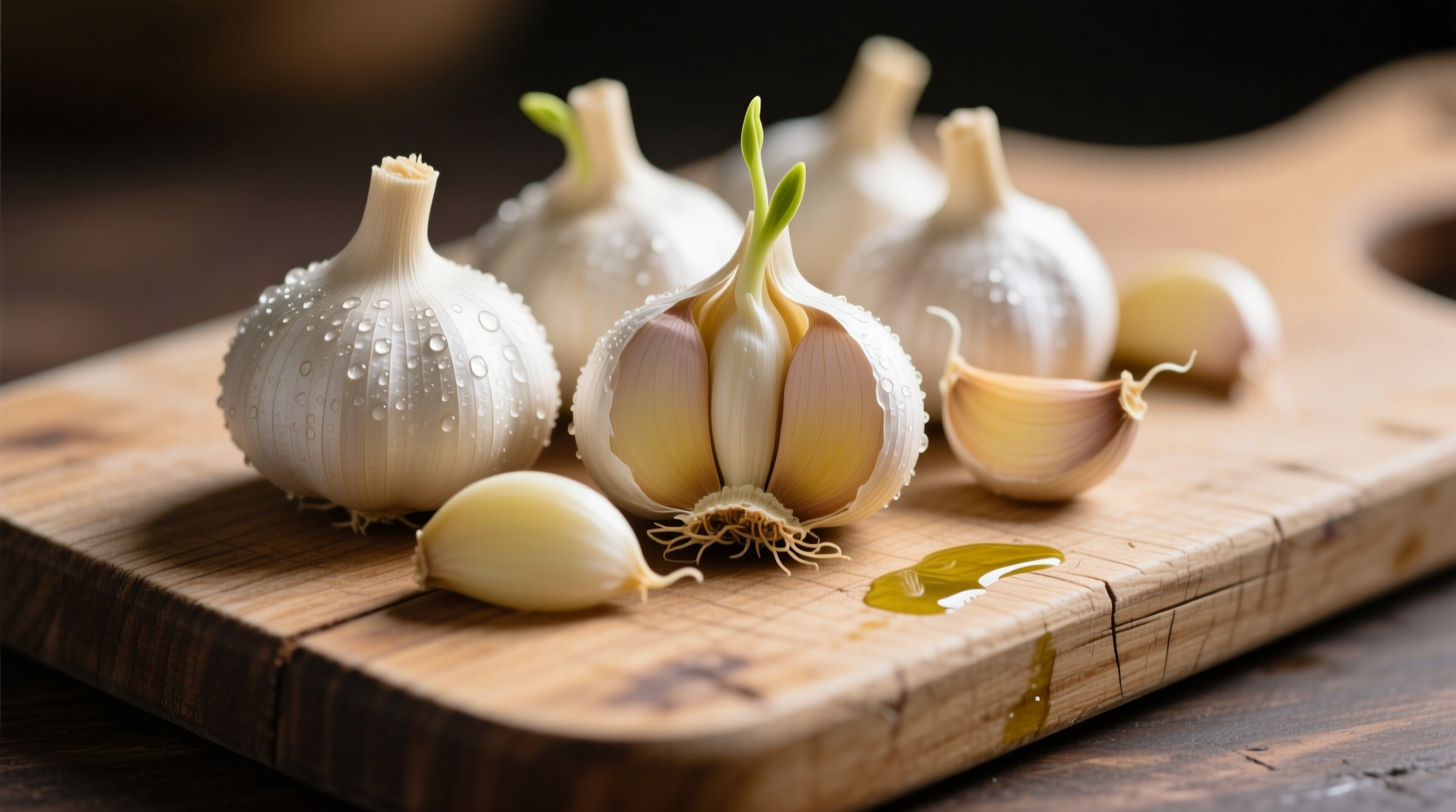Raw garlic may provide modest cold symptom relief due to its allicin compound, but scientific evidence shows limited effectiveness for preventing or curing colds. Major health organizations like the NIH and Mayo Clinic indicate garlic offers potential immune support but shouldn't replace conventional treatments for severe symptoms.
When you're battling a stuffy nose and sore throat, the promise of a natural remedy like raw garlic can be tempting. But what does the science actually say about using raw garlic for colds? After reviewing clinical studies from the National Institutes of Health and recommendations from medical institutions, we've compiled evidence-based guidance on when garlic might help, how to use it properly, and important limitations to understand.
What Science Says About Raw Garlic and Colds
Garlic contains allicin, a sulfur compound formed when cloves are crushed or chopped. According to research published in Clinical Nutrition, allicin demonstrates antimicrobial properties that could theoretically support immune function. However, the concentration of active compounds in raw garlic varies significantly based on preparation method and freshness.
A comprehensive review by the National Center for Complementary and Integrative Health (NCCIH) analyzed multiple clinical trials and concluded that while some studies showed modest reduction in cold duration, the evidence remains inconclusive. The most promising results came from a study where participants taking aged garlic extract experienced 21% fewer colds, but this differs from consuming raw garlic directly.
| Preparation Method | Allicin Availability | Practicality for Cold Relief |
|---|---|---|
| Crushed raw garlic (immediate consumption) | High (100%) | Moderate (strong flavor/taste) |
| Crushed raw garlic (allowed to sit 10 minutes) | Optimal (up to 150% more) | Moderate |
| Cooked garlic | Low (10-30%) | High (milder taste) |
| Garlic supplements | Variable (check label) | High (consistent dosing) |
How to Use Raw Garlic for Cold Symptoms: Evidence-Based Approach
If you decide to try raw garlic during a cold, proper preparation maximizes potential benefits while minimizing discomfort:
Optimal Preparation Technique
Research from the Journal of Agricultural and Food Chemistry shows that crushing garlic and letting it sit for 10 minutes before consumption increases allicin production. This simple step activates the enzyme alliinase, which converts alliin to the more beneficial allicin compound.
Recommended Dosage for Adults
- Mild symptoms: 1 small clove (1-2 grams) chopped and mixed with honey
- Active cold: Up to 2-3 cloves daily, divided into multiple servings
- Preventive approach: 1 clove daily during cold season
Always consume raw garlic with food to prevent stomach irritation. The World Health Organization recognizes garlic as safe at these moderate levels, but higher doses may cause digestive issues.

When Raw Garlic Won't Help (And What to Do Instead)
Understanding garlic's limitations is crucial for effective cold management. The Centers for Disease Control and Prevention (CDC) emphasizes that no natural remedy can cure viral infections like the common cold. Garlic's potential benefits are limited to:
- Supporting general immune function
- Possibly reducing symptom duration by a small margin
- Providing antioxidant compounds
Garlic won't help in these situations:
- When symptoms last longer than 10 days (possible bacterial infection)
- With high fever (over 102°F/39°C)
- When experiencing difficulty breathing
- For children under 2 years old
In these cases, consult a healthcare provider rather than relying on home remedies. The American Academy of Family Physicians recommends evidence-based treatments like saline nasal irrigation and proper hydration as first-line approaches for cold symptoms.
Practical Implementation Guide
For those incorporating raw garlic during cold season, follow this evidence-based protocol:
Morning Routine
- Crush 1 small garlic clove and let sit for 10 minutes
- Mix with 1 teaspoon raw honey and lemon juice
- Consume with warm water on a full stomach
Evening Relief
- Add crushed garlic to chicken soup (add near end of cooking)
- Prepare garlic-honey syrup: 3-4 crushed cloves in 1/4 cup honey
- Take 1 teaspoon as needed for sore throat
Remember that consistency matters more than intensity. Daily moderate consumption provides more benefit than occasional large doses. The European Food Safety Authority confirms that regular, moderate garlic intake contributes to overall health without significant risks for most adults.
Important Safety Considerations
While generally safe, raw garlic has important considerations:
- Blood thinning: Garlic may interact with anticoagulant medications like warfarin
- Digestive sensitivity: Can cause heartburn or stomach upset in some individuals
- Surgery warning: Discontinue 1-2 weeks before scheduled procedures
- Pregnancy: Moderate culinary use is safe, but high doses not recommended
The Mayo Clinic advises consulting your healthcare provider before using garlic therapeutically if you take prescription medications or have underlying health conditions. Natural doesn't always mean risk-free.
Conclusion: Managing Expectations with Raw Garlic
Raw garlic offers potential immune support during cold season, but it's not a miracle cure. The most effective cold management combines evidence-based approaches: proper hydration, rest, symptom relief medications when needed, and moderate garlic consumption as part of a balanced diet. When cold symptoms persist beyond typical duration or become severe, seek medical advice rather than relying solely on home remedies.











 浙公网安备
33010002000092号
浙公网安备
33010002000092号 浙B2-20120091-4
浙B2-20120091-4